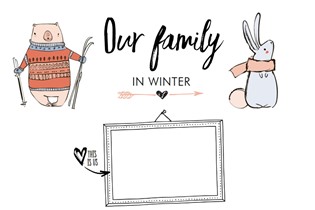Tips for making a bit on the side

Seasoned side hustler Sarah Tennant shares hard lessons learned from her experience as a part-time mumpreneur.
Working part-time with kids is not a new concept. From the colonial farmer’s wife who kept poultry to the 1950s East End ‘mam’ who took in washing, women have never really been as neatly divided into the working or stay-at-home categories as the mommy-wars media would like us to think.
Lately though, making a bit of extra income from home is positively en vogue. The trending term is ‘side hustle’, the hashtag, regrettably, is #bossbabes, and the promises are freedom, empowerment, flexibility and a steady stream of moxie-powered income.
To be clear, I’m not anti side-hustling. Not at all. As the owner of four children and an English degree – both conspicuously useless at paying bills – I’ve spent many nights over the years Googling ‘legitimate work-from-home business’ with varying levels of panic.
And let me tell you, it’s a jungle out there. I’ve scrolled through numerous ads for cash-back apps that only work in the USA, navigated find-a-freelancer websites where companies offer you a paltry $3 to write a 500-word blog post about protein shakes, and trawled those 50-ways-to-make-money lists of suggestions ranging from the ghastly (start an in-home daycare) to the logistically difficult (sell your sperm). Once, in a dark moment, I even toyed with the idea of becoming an Avon lady.

On the whole, my forays into the dressing-gown-clad workforce have been a success. I’ve made enough money to help us out of financial tight spots, and to fund the odd holiday or extravagant Christmas present. I’ve collected some interesting experiences and anecdotes that don’t involve my children’s bodily fluids. And I’ve felt validated – rightly or wrongly – by having someone else believe my skills are worth cold, hard cash.
But the road to disillusionment is paved with business ideas, and side hustling has its own peculiar pitfalls.
KNOWING THYSELF
Before starting up a side hustle, you need to take a long, hard look at your desires, skills and limitations.
Firstly: what do you want? $20 a week or $200? Are you looking to keep up or expand your pre-baby work skills, so as to rejoin the workforce later? Or do you just want a slightly profitable creative outlet – a hobby that pays for itself, as a change of pace from nappy-changing?
Secondly: what will your children (inside the womb or out) physically allow you to do? I’ve gotten lucky with two chilled-out babies who let me leave them with my husband for three hours while I invigilated high school exams for $60 a pop. I also had one baby who’d have died of rage if I’d attempted such a betrayal. Baby #4 is somewhere in between – a quick trip out mystery shopping is fine, but only just.
Thirdly: what will your house set-up allow you to do? Author Virginia Woolf was thinking about the creation of deathless poetry when she wrote A Room of One’s Own, but the creation of cloth nappy covers or medical transcriptions also requires a space with some quiet and security.
THE CRAFT TRAP
There are a million ways to make money on the side, but there are two I urge people to be wary of. The first is selling arts and crafts.
If you’re a decent seamstress or knitter, you’ve probably heard someone say, “That’s so pretty, you could sell that!”. It’s a lovely thought. And if we lived in a world where people really valued handcrafted items, it might just work. Unfortunately, we live in New Zealand, a country in which craft supplies are expensive, people are thrifty, and “I could make that myself” is the slogan of craft-market attendees.
In short, it’s next to impossible to make worthwhile money on handmade items. The prices required to give you a decent hourly wage, compared to the cost of a ‘similar’ item from The Warehouse, are simply too high. Too many women end up lowballing their prices for fear of looking greedy, and that’s a surefire way to end up resentful, burnt out and knitting baby blankets at 3am for $20 a pop.
It’s not impossible to make money from your crafting skills, but rather than selling the product itself, try teaching classes, selling PDF patterns online, or writing for craft magazines.
PARTY FAVOURS
The MLM, or multi-level-marketing scheme, is a popular side hustle for stay-at-home parents, but one I suggest you sidestep. The ‘technically not pyramid schemes’ of the corporate world, MLMs are companies which sign up distributors to sell a product and to then recruit other distributors. Every distributor gets a percentage from the sales of the distributors ‘downstream’ from herself, and so on – resulting in an income distribution which is suspiciously triangular.
Repeated studies have found that the vast majority of MLM distributors don’t make a profit (one study put the failure rate at over 99%!) and some even end up in debt themselves having shelled out for the buy-in, sample products and training weekends.
There’s also a social cost to MLMs. They rely on an increasing number of distributors – who tend to know each other – so areas quickly become oversaturated. Friends and family may agree to host one nail-decal party; after that, they’ll start to avoid you.
| QUICK AND DIRTY MONEY-MAKING TIPS |
 Leave your artistic pride at the door and make what appeals to the largest demographic. I make money by selling homemade marshmallows in gourmet flavours such as dark chocolate, mint and passionfruit. Know which ones sell best? The pink ones. Leave your artistic pride at the door and make what appeals to the largest demographic. I make money by selling homemade marshmallows in gourmet flavours such as dark chocolate, mint and passionfruit. Know which ones sell best? The pink ones. |
 Money is easier to save than to make. If you need an extra $50 a week, you’ll probably spend less time and effort in trimming the budget than in starting up a business. Money is easier to save than to make. If you need an extra $50 a week, you’ll probably spend less time and effort in trimming the budget than in starting up a business. |
 By the same token, it’s easier to exploit existing skills and contacts than to make new ones. If you want to make money quickly, you can’t afford a steep learning curve. Think of the things you’re known for being good at and work with those. And don’t be afraid to ring ex-employers – they may have part-time work-from-home work available for you. By the same token, it’s easier to exploit existing skills and contacts than to make new ones. If you want to make money quickly, you can’t afford a steep learning curve. Think of the things you’re known for being good at and work with those. And don’t be afraid to ring ex-employers – they may have part-time work-from-home work available for you. |
 Don’t undercharge. Unusually cheap products or services will attract people who want the cheapest thing possible, and they’re likely to be critical tyre-kickers. Charging more while emphasising the quality of the product/service will attract people with more money to spend and a higher appreciation for quality. Don’t undercharge. Unusually cheap products or services will attract people who want the cheapest thing possible, and they’re likely to be critical tyre-kickers. Charging more while emphasising the quality of the product/service will attract people with more money to spend and a higher appreciation for quality. |
 Even worse than undercharging is working for exposure. Never, ever work for exposure. People with enough success to help your career can afford to pay you; people who can’t won’t be able to help you. Even worse than undercharging is working for exposure. Never, ever work for exposure. People with enough success to help your career can afford to pay you; people who can’t won’t be able to help you. |
 Keep an eye out for one-off, short-term gigs like bus surveys, vote counting on election day, exam supervision and Christmas mall gift-wrapping. Employers will often keep you in mind for future occasions too. Bear in mind payment for these can be quite delayed. Keep an eye out for one-off, short-term gigs like bus surveys, vote counting on election day, exam supervision and Christmas mall gift-wrapping. Employers will often keep you in mind for future occasions too. Bear in mind payment for these can be quite delayed. |
KNOWING YOUR BOUNDARIES
Work-life balance is hard enough for people with normal jobs. When your home is your workplace, the two can get intricately tangled up.
Hamilton mum Talia van der Wel started blogging as a platform to market her handspun, hand-dyed yarn. As children came along she incorporated ‘mummy blog’ elements such as photos. The kids were cute; the blog thrived. Advertising revenue trickled in; so did free products, sent to her to review.
It was every lifestyle blogger’s dream, but Talia soon found the demands of the supposed creative outlet took their toll. Keeping traffic high meant lots of strategic, superficial engagement with other bloggers and Instagrammers, while the pressure to produce content meant she began viewing every craft or fun activity with her kids as a potential blog post.
“I found that instead of actually enjoying the moment or the project, I felt obliged to stop and take step-by-step photos and document the whole process. It really did suck the joy out of something I really should have enjoyed.”
Talia abandoned the blog, but not the urge to side-hustle. Today she sells watercolour paintings on commission. Her blogging experience has led to a different, approach. “I’m allergic to marketing now”, she says, an attitude which has allowed her reputation to grow quietly and organically, leaving her free to enjoy creating her art.

ENFORCING YOUR BOUNDARIES
So, you’ve decided how much time and emotional energy you’re willing to invest in your side hustle. The next thing to think about is how to handle things when your clients don’t play ball.
Unfortunately, working from home tends to breed a certain disrespect in clients. The cosy, personal environment of a home can encourage clients to think of your job as just a hobby and not a serious enterprise.
Victoria Scandrett teaches piano with her husband from their Auckland home, and the couple are all too familiar with this problem. Parents would frequently inform Victoria they were taking their child on holiday, and would not be paying for the lessons they planned to skip. This created a somewhat fluctuating income, and lesson slots that were hard to fill, says Victoria. “Most people seem to view lessons as pay-as-you-go type of commodity.”
Another common scenario was students cancelling lessons at the last minute, then requesting a make-up lesson, which tended to encroach on the Scandretts’ family time. “It got to the point where we were spending a good few hours every week trying to juggle requests for swaps and make-up lessons and it was becoming an admin nightmare” says Victoria. The Scandretts realised they needed to be much firmer and now make a point of clearly explaining their policies to new clients. They’re also using an online system which requires clients to reschedule cancelled lessons themselves – during available working hours only.
Of course, professionalism goes both ways, and having children is no excuse for sloppy work ... which leads me to one of my finest career moments. I was mystery shopping in an upmarket jewellery store, which required me to dress like a diamond-buying person. I wore my poshest dress and was served by a very polite saleswoman. I thought it was an impressive performance until I noticed my shoulder was sporting a slice of limp cheese, draped there earlier in the day by my toddler. Maybe we can’t have it all.
| Sarah Tennant is and/or has been a freelance writer, occasional waitress, mystery shopper, sporadic wedding-cake baker, homemade-marshmallow seller, exam supervisor, caregiver, tutor, jam-seller, reader-writer, busker, academic-dress hire assistant, camp cook, web editor and market research participant. Fortunately, her husband has a real job. |

AS FEATURED IN ISSUE 46 OF OHbaby! MAGAZINE. CHECK OUT OTHER ARTICLES IN THIS ISSUE BELOW

















